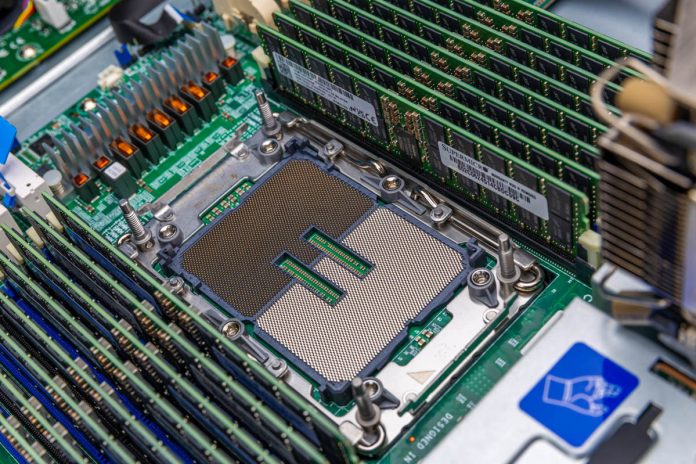The roadmap for Intel Xeon’s next major update has had two variants, just as it does today. Over the past few weeks, and under new Data Center Group leadership, that roadmap has been analyzed, and a significant change has been announced. Intel’s next-generation 8-channel “Diamond Rapids”, the successor to today’s popular Granite Rapids-SP, or the mainstream Intel Xeon 6700P/ 6500P series of server processors, has been removed from Intel’s roadmap.
Intel Cancels its Mainstream Next-Gen Xeon Server Processors
The next generation of high-end server processors is poised to transition from 12 to 16 channels of memory, utilizing faster memory as chip designers integrate more cores and faster I/O with PCIe Gen6. We expect this transition to happen in the second half of 2026 to support future AI cluster build-outs. Both AMD EPYC “Venice” and the Intel Xeon “Diamond Rapids” will have 16-channel memory.
While 16-channel memory may not sound like an exciting number at first, the challenge of Intel’s dual-platform strategy in the data center is highlighted in servers. The 12-channel memory parts like Intel’s Granite Rapids-AP (Intel Xeon 6900P series), custom-only Sierra Forest-AP, and the upcoming Clearwater Forest-AP, use platforms with 12 memory channels per CPU for 24 DIMMs. In a standard 19″ rack server motherbaord, there is quite a bit of space to fit more components.

As a quick aside, this is similar to the configurations of the AMD EPYC 9004/ 9005 systems for Genoa, Genoa-X, Bergamo, and now Turin, which all utilize 12-channel memory. The 12-channel memory design in these chips provides 50% more theoretical memory bandwidth than the previous 8-channel designs, assuming all other factors remain equal. Those factors are almost never equal, but that is the concept.
There are still challenges with the 12-channel designs. For example, you can get more DIMM slots for more memory capacity with an 8-channel platform. Intel has an 8-channel memory design with the Birtch Stream-SP platform for the Xeon 6700 series (Granite Rapids-SP and Sierra Forest-SP) that provides a few major benefits.
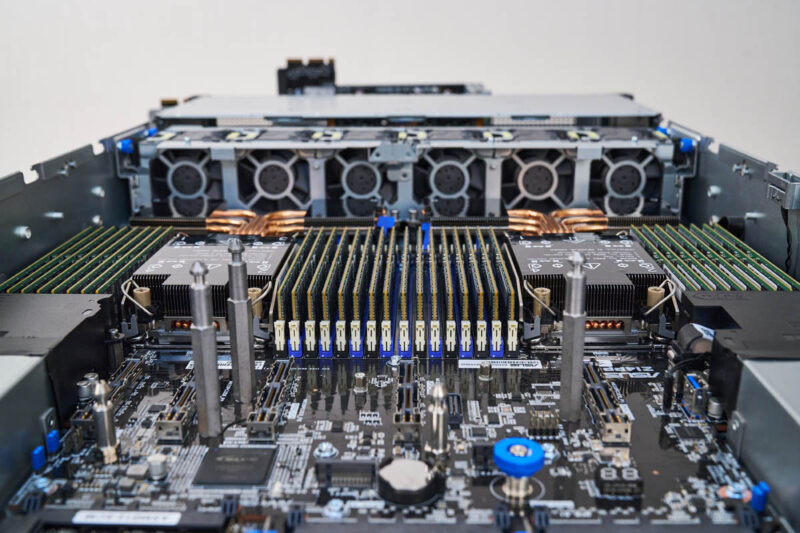
First, it allows a server to be configured with two DIMMs per channel (2DPC) operation for adding more memory. Many workloads require a certain memory capacity. Having more DDR5 DIMM slots means you can fit more DIMMs into a server, two CPUs, eight-channel memory, 2DPC is 32 DIMMs, or 33% more than the 12-channel designs can fit.
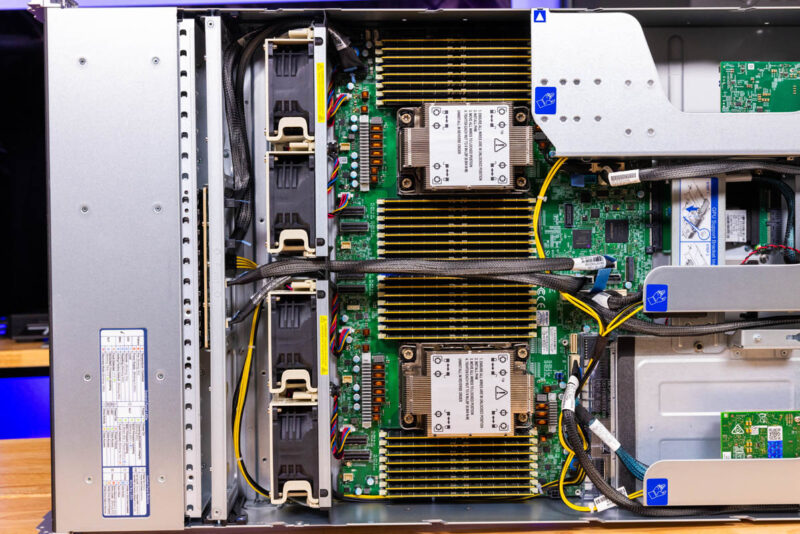
Going to two DIMMs per channel in a 12-channel platform, like this Gigabyte AMD EPYC server, causes unnatural-looking server motherboards.
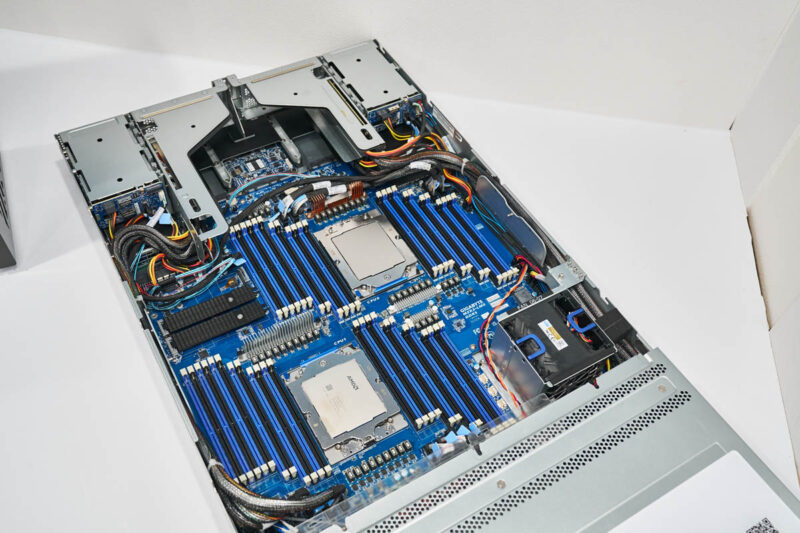
Fitting 48 DIMMs (or 32) comes at a memory bandwidth hit, as well as the memory channels clock down to handle longer trace lengths. The 2DPC 48 DIMM platforms run DDR5 slower, even if they are only populated with 24 of the 48 DIMM slots.

Still, the Intel Xeon 6700 series is popular. We recently looked at the MLPerf Training v5.1 submissions, and the Intel Xeon 6700P was more popular than the Xeon 6900P. That might shock people since the Xeon 6900P is supposed to be the high-end AI line, but 8-channel designs are popular.
A primary advantage of an 8-channel platform for mainstream servers is that the motherboards can be more cost-effective, and populating the servers is less expensive. If you are looking to purchase 64 cores per socket, you can use a smaller socket and have a lower-cost motherboard. You can also lower your DRAM cost by using a greater number of lower-capacity modules rather than paying price premiums for higher-capacity models. This makes the Xeon 6700P/ 6500P series popular because it is the lower-cost option for those who do not need higher core counts. It actually is a point of competitive differentiation for Intel Xeon over AMD EPYC because Intel has a lower-cost platform.
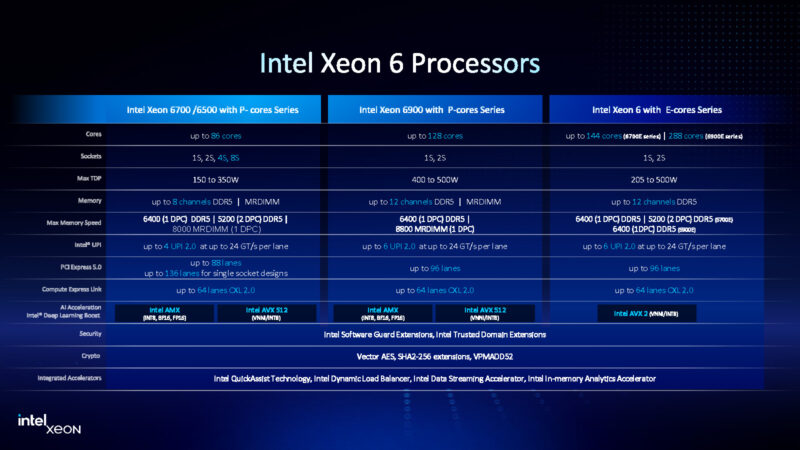
With Oak Stream platforms and Diamond Rapids CPUs, Intel has a better setup than in the current Birtch Stream and Granite Rapids era. The reason is that the Oak Stream roadmap had both a 16-channel and an 8-channel variant. Sixteen channels give the memory capacity of an eight-channel 2DPC platform.
A few months ago, Intel’s CEO Lip-Bu Tan made remarks discussing some of the decisions he was on the path to change, such as removing SMT or Hyper-Threading, and how it made Intel’s upcoming products (like Diamond Rapids) less competitive. Within a few minutes of meeting Intel’s new Data Center Group EVP and GM, Kevork Kechichian, I mentioned that it must be tough for the business to have comments like that out there.
From what I understand, Intel has been analyzing its roadmap over the past few weeks. About a month ago, there was chatter among OEMs that Intel’s next-generation 8-channel platform for Diamond Rapids might end up on the chopping block. More recently, OEMs have been learning that the 8-channel Diamond Rapids platform has fallen off Intel’s roadmap, while the 16-channel Diamond Rapids remained.
We had multiple sources, enough to publish on, so I sent a note to Intel last night, and they quickly sent the following statement:
We have removed Diamond Rapids 8CH from our roadmap. We’re simplifying the Diamond Rapids platform with a focus on 16 Channel processors and extending its benefits down the stack to support a range of unique customers and their use cases. (Source: Intel Spokesperson to STH)
I know there are many rumors in the industry, but this, like removing a Cooper Lake variant from its roadmap, selling its server systems business to MiTAC, and so forth, are all ones that Intel itself has confirmed directly to us.
Final Words
In many ways, this is the way of the server market. Lower-end server platforms that offered the same number of memory channels as previous generations have gradually been phased out over time. The (Xeon) EN is dead – Long Live EN! from over a decade ago was a classic case study in this, except that the Xeon 6700P/ 6500P series has been quite popular. Perhaps the real takeaway is that in servers, eventually the smaller sockets disappear as the world adjusts to higher server capacities.
For those who want a deeper dive into market dynamics, given this change, you can check our Substack for that and why I think it might be a net positive signal.



